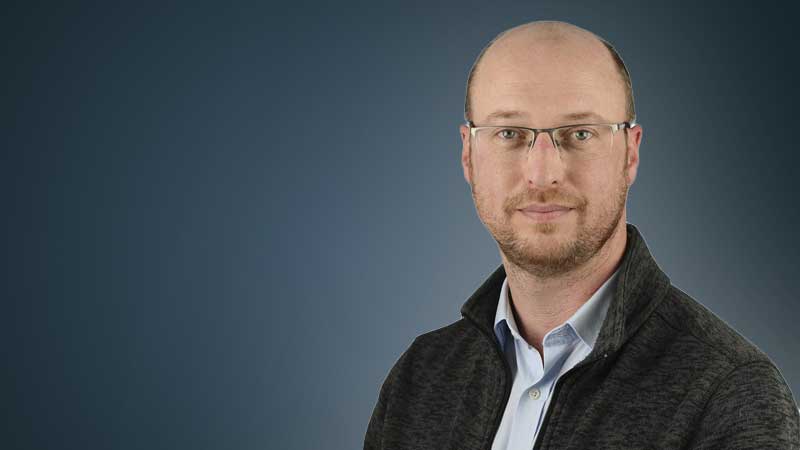Bringing photonics to life: transforming healthcare through light

Why it matters
Michael Tanner’s work is revolutionising how photonics can be applied to clinical challenges, transforming abstract technologies into practical solutions for healthcare.
Photonics, the science of light, offers unique opportunities for medical diagnostics and treating a variety of conditions. Michael’s research focuses on tailoring photonics for clinical use, such as advanced fibre endoscopy, time-resolved photon counting imaging, and spectroscopy (the study of how matter interacts with electromagnetic radiation to identify and analyse the properties of substances). In turn, these techniques enable novel and minimally invasive approaches to diagnosing and treating health issues, from women’s health to photodynamic cancer therapy.
By designing fibre-optic sensors as thin as a human hair, his work makes it possible to explore hard-to-reach areas of the body without causing harm. Time-resolved spectroscopy measures how tissues interact with light on a billionth-of-a-second scale, providing unparalleled detail about tissue composition and function. These advances could lead to earlier disease detection and more precise treatments, potentially saving lives and improving patient outcomes.
Collaborate to innovate
Tackling real-world healthcare challenges requires an interdisciplinary approach. Michael’s work bridges engineering, physics, and medicine to create solutions that translate seamlessly from the lab to clinical practice. His collaboration with the Royal Infirmary of Edinburgh is bringing time-resolved imaging systems to first-in-human trials. Supported by organisations such as Engineering & Physical Sciences Research Council (EPSRC), Medical Research Council (MRC), and Scottish Enterprise, Michael is advancing these technologies toward commercial application.
Photonics has the potential to revolutionise healthcare by providing non-invasive ways to diagnose and treat diseases. Collaboration with clinicians and researchers from diverse fields is key to turning these ideas into tools that can change lives.
By embedding himself in interdisciplinary environments and working with clinicians, chemists, and biologists; Michael has made significant progress in applying photonics to practical medical devices, such as imaging systems and fibre-based probes.
Challenging existing perceptions
Michael’s career journey exemplifies how advanced technologies, often considered abstract or theoretical, can be transformed into real-world applications. Beginning in quantum technologies, his hands-on expertise has evolved into developing photonics tools for healthcare. Proving that skills focused in one scientific domain can have far-reaching impacts when applied creatively to another.
His research also challenges perceptions of complexity by creating accessible, scalable technologies that could be adopted widely, from early disease detection to brain cancer treatments.
Real-world impact
Michael’s innovations are poised to make a tangible difference in clinical settings. His work on wide-field imaging systems, set to be trialled in hospitals by 2025, could transform how tissue properties are analysed. Similarly, his focus on photodynamic therapy is improving the precision of cancer treatments by using light to activate targeted chemicals within tumours, reducing damage to healthy tissues.
These technologies not only enhance diagnostic and therapeutic capabilities but also align with healthcare’s move toward minimally invasive and patient-centred solutions.
Michael is committed to ensuring his research reaches beyond academia. By collaborating with Scottish Enterprise and advancing commercial pathways, he is paving the way for photonics-based tools to be widely used in clinical settings.
Current role
As an Associate Professor in the Institute of Photonics and Quantum Sciences (IPAQS) at Heriot-Watt, Michael leads a growing team dedicated to applying photonics to healthcare. His role involves uniting researchers from multiple disciplines to tackle pressing medical challenges, with a focus on innovation, collaboration, and impact.
His vision is clear: to take photonics out of the lab and into the clinic, enabling earlier diagnoses, better treatments, and a brighter future for healthcare.